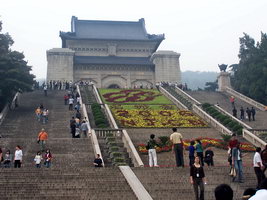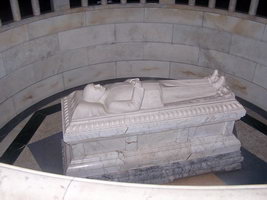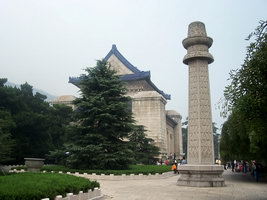Remembering Dr. Sun Yat-sen
How does a Westerner start to understand and appreciate a country and culture with a 5000 year history? Maybe one just stumbles into it, and waits to see what happens.
In my case, I’ve been fortunate have friends who have spent some time in Canada. While visiting them I’ve seen life somewhat as they are living it. At other times, like on this occasion, I am guided to see some part of China which they think should be important for me, a foreigner, to know and understand.
 That is how I was first introduced to Sun Zhongshan, as he is affectionately known in China. A former grad student from Regina, now back home in Anhui Province to visit his family, chose to meet me in Nanjing .
That is how I was first introduced to Sun Zhongshan, as he is affectionately known in China. A former grad student from Regina, now back home in Anhui Province to visit his family, chose to meet me in Nanjing .
Dr Sun Yat-sen was once a foreign student, as well. He returned to China during the time of the last emperor (Qing Dynasty) with hopes of encouraging some change. But I knew very little about him the day I visited his memorial site on the mountainside in Nanjing.
 So, how did this man with medical training from abroad get such a grand burial in the old (southern) capital city of China? It was worthy of more research, and it turned out to be a most fascinating story.
So, how did this man with medical training from abroad get such a grand burial in the old (southern) capital city of China? It was worthy of more research, and it turned out to be a most fascinating story.
Today, every city in China will have streets, bridges, parks or major buildings named after him. He continus to be celebrated as the Father of Modern China.
 Here in Nanjing this grand memorial stretches up the mountainside for the better part of a kilometer. The setting is beautiful. And at the top, his sarcophagus, is housed in a resplendent stone building.
Here in Nanjing this grand memorial stretches up the mountainside for the better part of a kilometer. The setting is beautiful. And at the top, his sarcophagus, is housed in a resplendent stone building.
There was much for me to learn about this man, and much more for me to see of him in China. For now, it is important to understand, he is credited with the overthrow of the last emperor of China in 1911, and the installation of the first democratic republic in all of Asia. And, yes, like many visionaries, he was probably much ahead of his time.